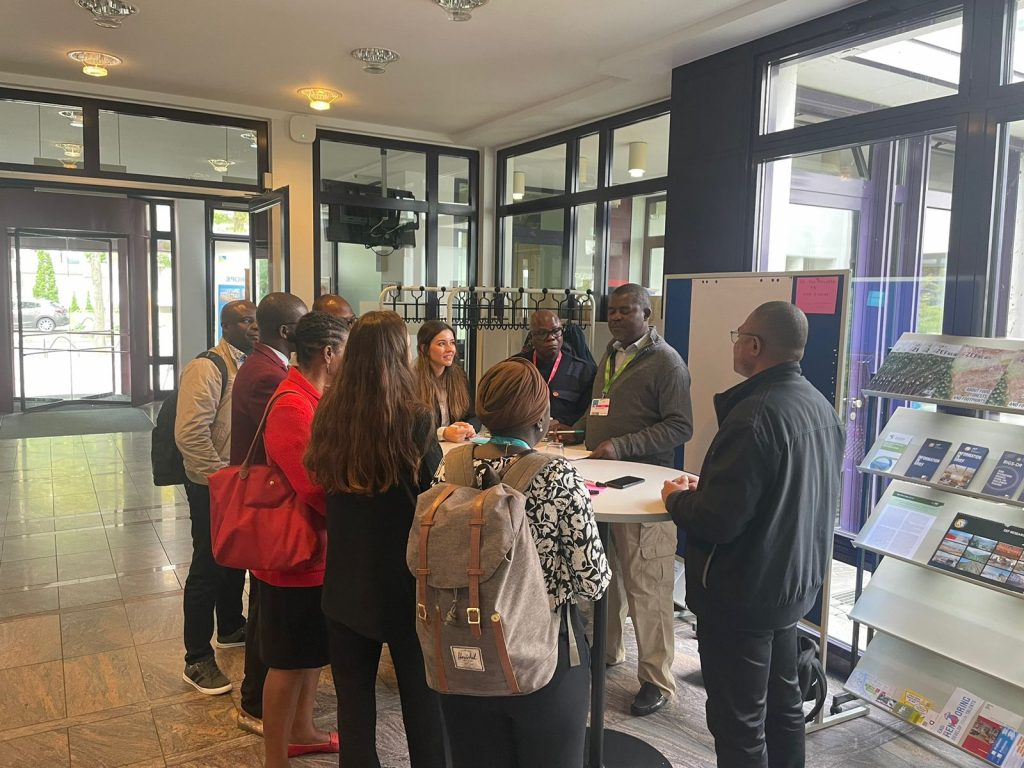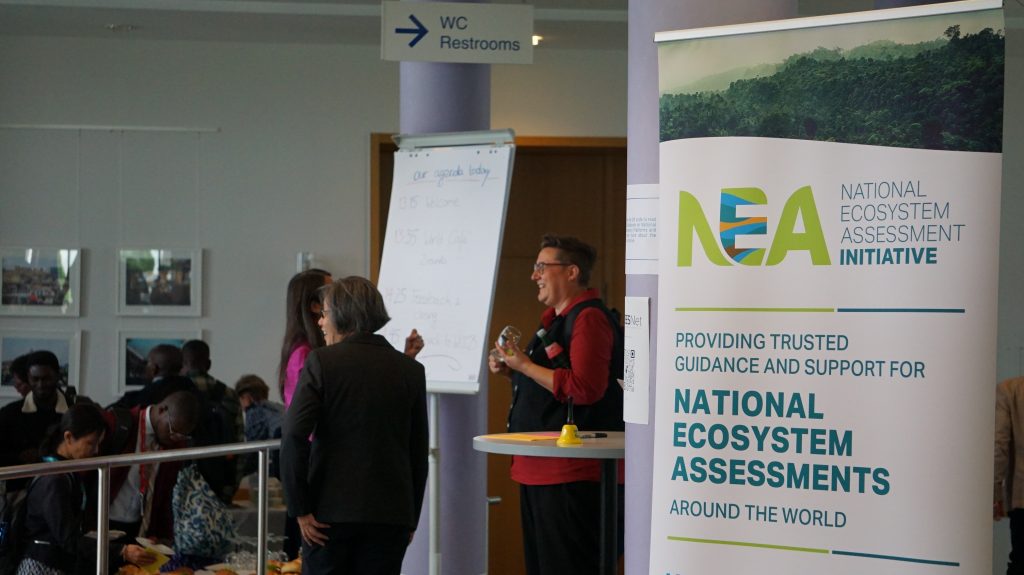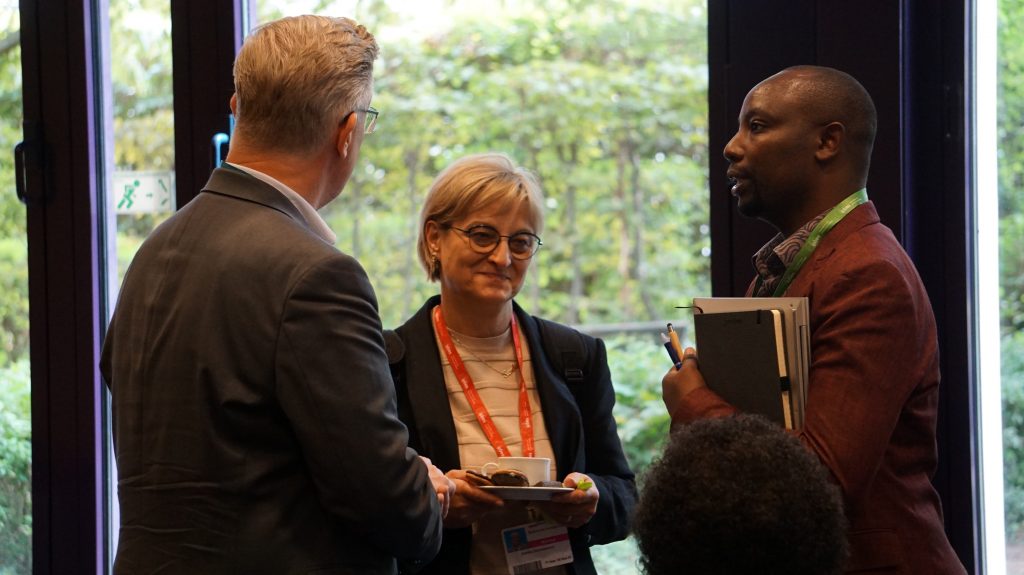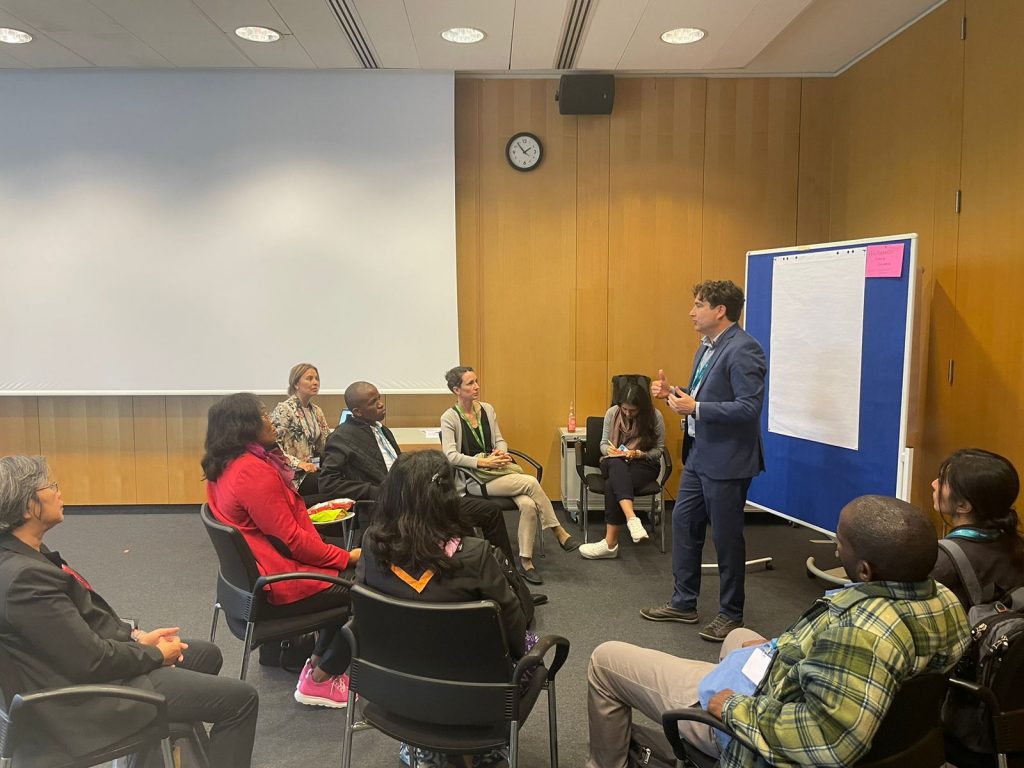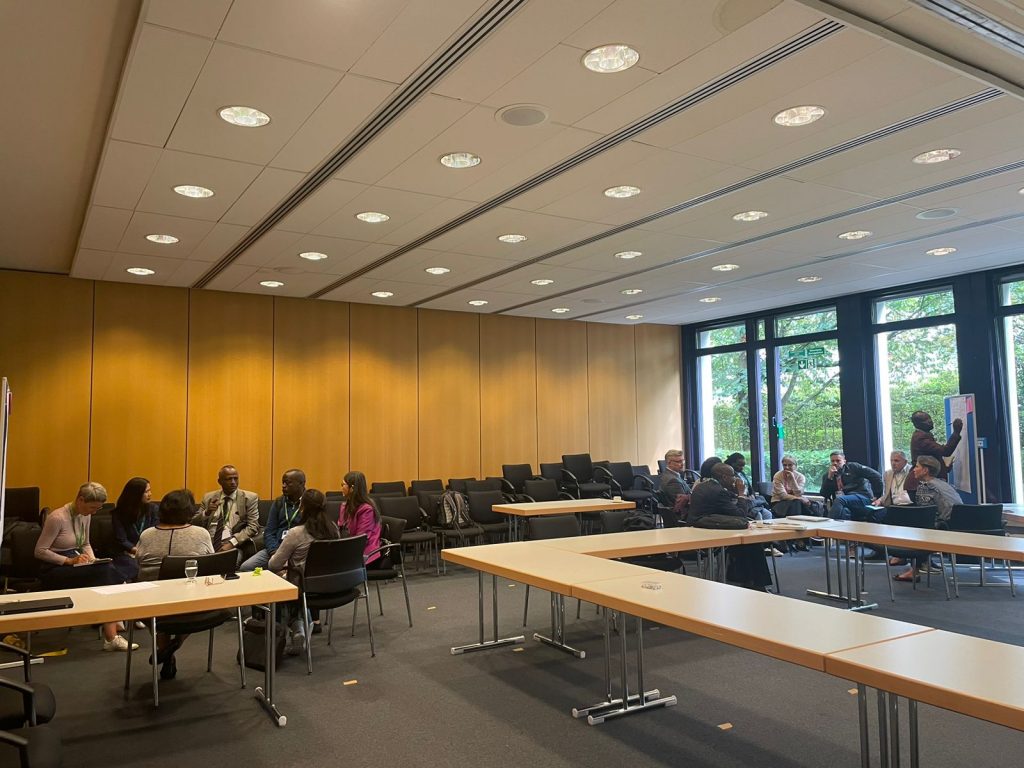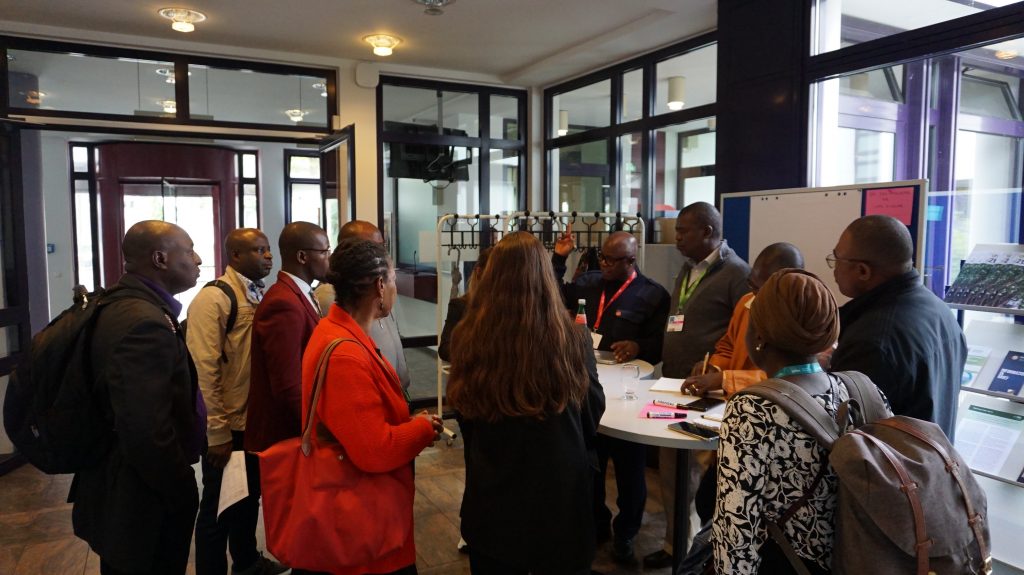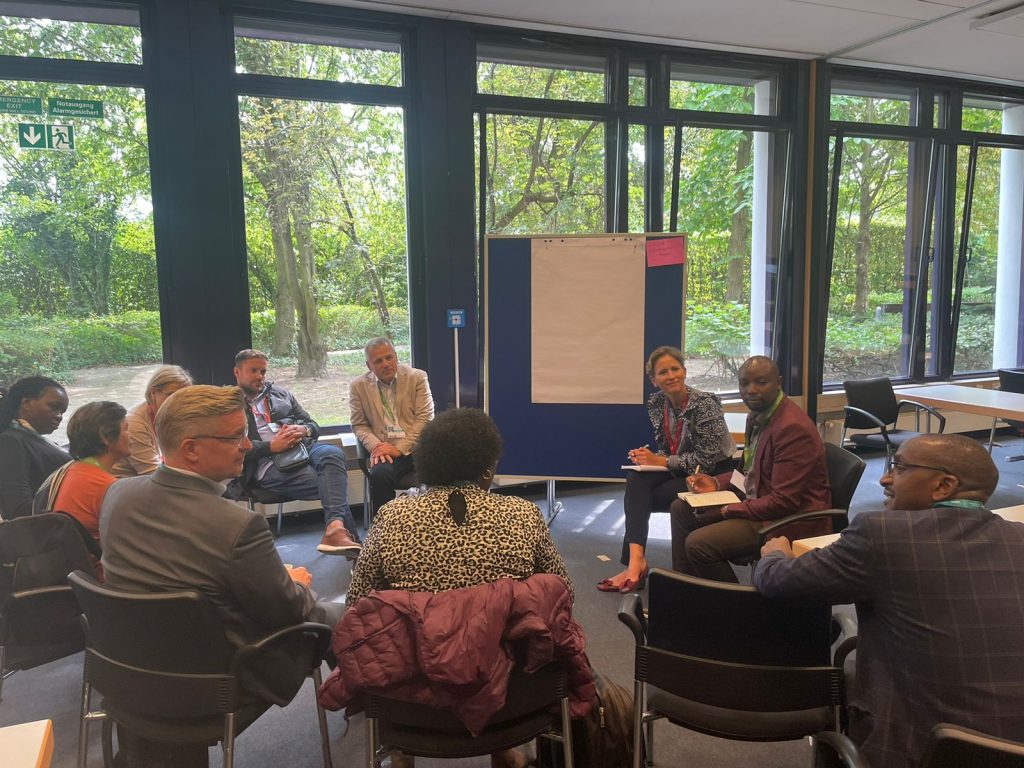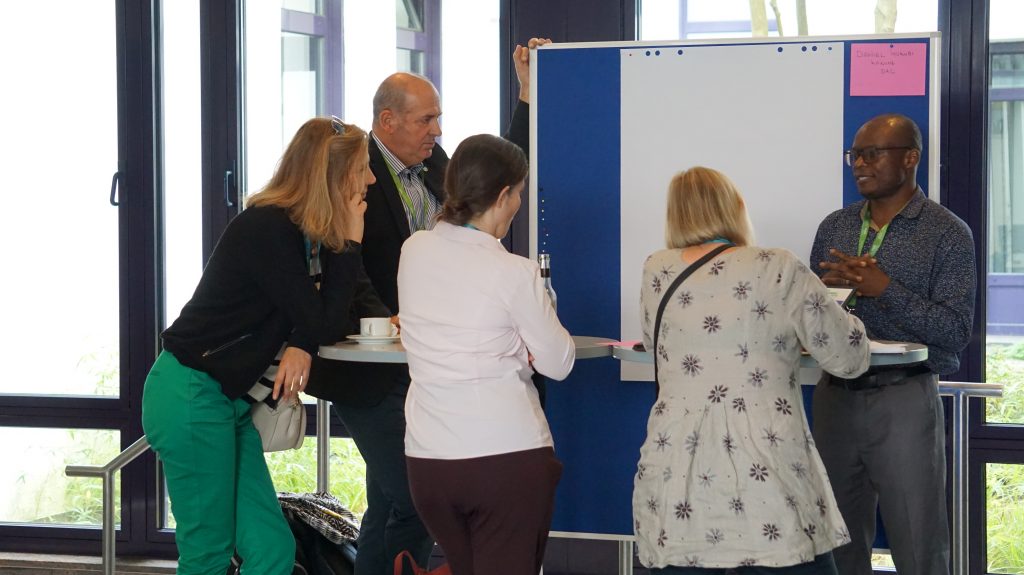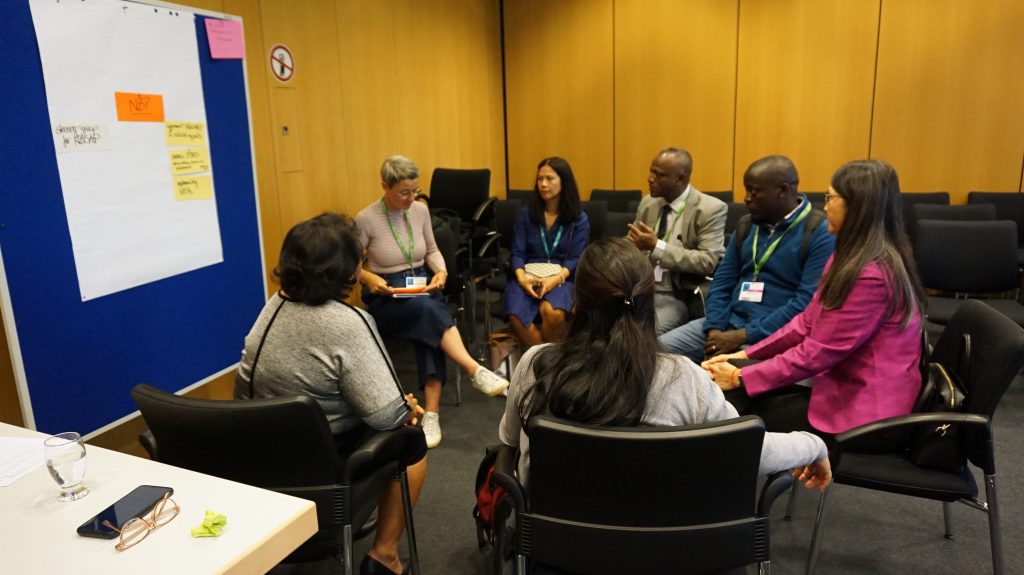The NEA Initiative at IPBES 10: Fostering peer-to-peer dialogue on the challenges and opportunities for National Biodiversity Platforms
- News
At the margin of the 10th session of the Plenary of the Intergovernmental Science-Policy Platform on Biodiversity and Ecosystem Services (IPBES 10), the National Ecosystem Assessment (NEA) Initiative co-hosted an event on National Biodiversity Platforms (NBPs). Discussions centred on the achievements, challenges and potential enhancement to optimise the platforms as a tool for the science-policy-practice interface while also exploring the future direction of NBPs.
The event facilitated a peer-to-peer exchange on the role that NBPs play in enabling multi-stakeholder inputs to biodiversity and ecosystem services-related decision-making. More than 50 participants from several countries discussed their progress in establishing and implementing NBPs and other multistakeholder networks and how they enable inputs from a wide variety of stakeholders into biodiversity-related decision-making. The event also introduced the “Guidebook on National Biodiversity Platforms: Connecting People and Nature.” developed by the Helmholtz Centre for Environmental Research (UFZ) under the umbrella of the NEA Initiative.
It was organised in partnership with UNESCO and UNDP, as part of the BES-Net consortium, the Capacity Development for Biodiversity and Ecosystem Services Experts (CABES) Project and UFZ, and held at the Centre for Development Research of the University of Bonn. It was a unique opportunity for participants from countries associated with CABES, BES-Net and the NEA Initiative to unite around the shared focus on NBPs, paving the way for increased cooperation and learning.
Peer-to-peer exchange
The peer-to-peer exchange provided a safe and open space for participants to share their own experiences regarding NBPs and networks in a private capacity. It enabled the exchange of knowledge between participants, and a number of insights and best practices were uncovered. The open space format encouraged free expression of opinions and allowed participants to share their personal experiences without having to present official views of their country or platform.
At the event, five multilingual tables were set up, each with an assigned question for discussion. The discussion questions include:
- How are inclusivity and broad membership put into practice in the science-policy interface in your country? How are Indigenous Peoples, local communities and the private sector involved?
- What is the process of establishing NBPs? What are the challenges and opportunities?
- How can NBPs and networks help us realise the ambitious new elements of the Kunming-Montreal Global Biodiversity Framework (GBF) and support the uptake of IPBES products at the national level?
There was a dynamic flow of ideas and perspectives and those participants with unique knowledge and experience around the question based on the NEA Initiative, BES-Net, or CABES support joined different tables as case givers and facilitated the discussion.
Some Indigenous leaders attending IPBES 10 also shared valuable insights on how NBPs could be strengthened based on their engagement experiences in global biodiversity platforms, emphasising the importance of diverse stakeholders and voices in the science-policy interface not necessarily recognised by science and policy.
Malawi’s experience emerged as an example of NBP, promoting community leadership and placing a special focus on engaging various actors, such as the private sector and Indigenous Peoples and local communities. To achieve this, it is important to identify challenges and mutual opportunities in fostering private sector engagement and involving various voices within the NBPs, particularly businesses leading on solving environmental issues. For instance, private sector entities could be targeted by showcasing and exemplifying business dependence on nature and biodiversity and emerging business opportunities enabling climate resilience and biodiversity conservation. At the same time, it is vital to contribute to mainstreaming biodiversity within the policies of other sectors. Additionally, it was discussed how NBPs co-exist with other biodiversity networks and their added value.
In another round table, the discussion focused on the role and impact of NBPs next to existing biodiversity policy instruments predating the platforms. Participants shared how the process of the establishment of NBPs was used to reflect on the existing biodiversity policy framework. This discussion helps to shape the design and mandate of NBP as well as its composition and ideally complements and strengthens existing arrangements.
With regards to establishing NBPs, national ecosystem assessments could provide a strong foundation. They can serve as a basic knowledge assessment laying the ground for the National Biodiversity Strategies and Action Plans (NBSAPs) revision, especially when looking into the links between biodiversity, ecosystem services, and economic development aspirations. Implementing national ecosystem assessments provides the necessary foundation for biodiversity through the establishment of working groups and committees. Participants also envisioned the use of a well-established committee in the national biodiversity/policy arena to drive the process of setting up and developing the platforms.
Finally, the discussions also delved into how NBPs fit within the framework of the recently adopted GBF – a landmark agreement to guide global action on nature through to 2030.
Based on their experiences, participants considered the following examples of tasks of an NBP:
- Approval of NBSAPs and related reports to the Convention on Biological Diversity.
- Supporting the development of the national ecosystem assessment.
- Consultations for early action to support the implementation of the GBF.
- Creation of space for more stakeholder engagement, e.g., by mirroring IPBES in its structure and participation processes.
Main takeaways of a valuable brainstorming session include:
- NBPs and networks will aim to play an important role in implementing the GBF.
- NBPs and networks must involve all relevant science-policy-practice stakeholders, including marginalized voices such as Indigenous Peoples and local communities.
- The private sector should also be involved in the work of NBPs and networks but needs to be motivated to participate and be engaged.
- NBPs and networks are essential to raise awareness of biodiversity and ecosystem services and should aim to mainstream biodiversity considerations into other public sectors.
- Sustainability of NBPs and networks is important, including sustainable funding.
The Way Forward
The event was a crucial step towards the initiation of important activities in order to carve a good way forward for establishing and managing NBPs. To that end, the organising team from the NEA Initiative will work on:
- development of an information document to be submitted at the next Subsidiary Body on the Implementation of the Convention on Biodiversity to be held in 2024 with inputs from the peer-to-peer dialogue as well as contributions from the experiences shared within the Guidebook and the webinar organised by the NEA Initiative on this matter in May 2023.
The National Ecosystem Assessment Initiative (NEA Initiative) at UNEP-WCMC is part of the Biodiversity and Ecosystem Services Network (BES-Net), working in partnership with UNDP and UNESCO. Financial support for the NEA Initiative is being provided by the International Climate Initiative (IKI) of the German Federal Ministry for the Environment, Nature Conservation, Nuclear Safety, and Consumer Protection, the Norwegian Environmental Agency, the Japan Biodiversity Fund, and SwedBio.

